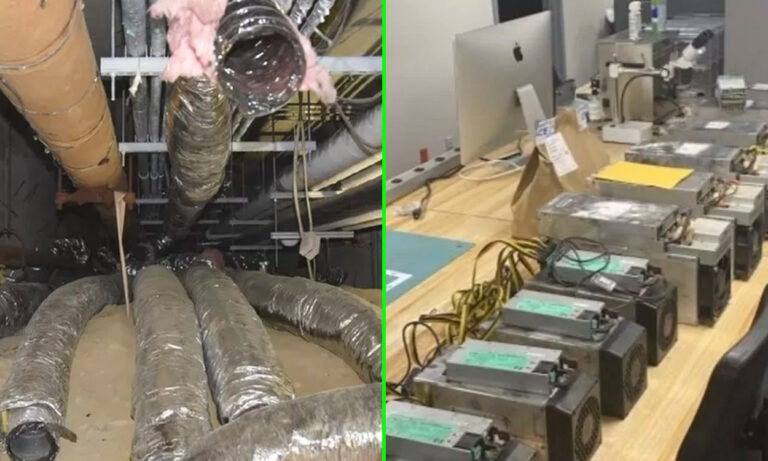Get rich quick? Police discover illegal crypto mining operation beneath a highschool

Have you started to notice mysterious wires travelling underneath your highschool? Does the constant whirring of fans humm ominously through the halls? Are computers going missing from the labs? If all of this sounds familiar, your highschool might be harbouring an illegal crypto mining operation underneath its foundation.
The mining of crypto currency—I’m of course talking about your Bitcoins and your Ethereum—has led the world into all sorts of strange directions, from South Korea using public toilets to power the mining of digital currency, to CryptoPanties non fungable tokens. In this bizarre case, it led to an assistant director of facilities in Cohasset, Massachusetts to create his own crypto mine in a crawl space underneath the highschool where he works.
As reported by the BBC, 39-year-old Nadeam Nahas, has been charged with the fraudulent use of Cohasset High School’s electricity, as well as vandalising the school. Cohasset Police Chief William Quigley said in a statement that they were first alerted to the possibility of the operation in December 2021, by the director of facilities, whom Nahas was the assistant to.
Quigley told the paper that “ during a routine inspection of the school the director had noticed electrical wires, temporary ductwork, and numerous computers that seemed out of place.” Out of place vents and coolers were what initially gave the computer mine away. Investigators then discovered the crawl space beneath the school and subsequently located Nahas’ crypto cave.
In court documents obtained by the Boston Globe, it was revealed that the operation had cost the school $17,500 in electricity. If you’re not familiar with what actually happens during crypto mining, graphics processing units, more commonly known as GPUs are set up to “mine” the currency, which tasks the units with processing heavy computer calculations, which in turn, allows for the transactions to be verified.
A pretty penny can be earned doing this (although the European Central Bank isn’t convinced at the longevity of digital mined money), provided you have the means to set up a crypto farm, and don’t care about the environmental impact of digital money.
Nadam, who pleaded not guilty in court on Friday 24 February 2023, has since resigned from his role at the school. The electricity goblin has since been ordered to stay away from all public buildings in Cohasset.




